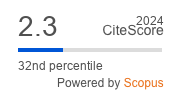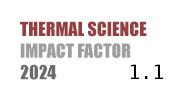ABSTRACT
The swift progress in electric commercial vehicle technology has significantly transformed manufacturing processes. With the rising demand for electric commercial vehicles, fire safety in manufacturing facilities has become a paramount concern. The high energy density of lithium-ion batteries, which are commonly used in electric commercial vehicles, presents unique challenges that require the deployment of efficient fire suppression systems. Thermal runaway is a critical trigger mechanism in lithium-ion batteries, where an increase in temperature can lead to a self-sustaining exothermic reaction. This phenomenon can be initiated by various factors such as overcharging, physical damage, or manufacturing defects. In a manufacturing plant, thermal runaway can occur due to improper handling, such as dropping batteries, mechanical damage during assembly, faulty battery management systems, or environmental factors like excessive heat. Once thermal runaway occurs in a single cell, it can rapidly propagate to adjacent cells, leading to a cascading failure and potential fire hazards. This can result in significant damage to equipment, production downtime, and safety risks to personnel. In severe cases, thermal runaway can cause large-scale fires, explosions, and the release of toxic gases, posing serious threats to human life and the entire facility. Therefore, understanding and mitigating thermal runaway is crucial in an electric commercial vehicle manufacturing plant to ensure operational safety and efficiency. This paper aims to compare various fire suppression materials and their effectiveness in maintaining fire safety in electric commercial vehicle manufacturing plants. By evaluating different materials, we seek to identify the most suitable options for mitigating fire risks associated with the production of electric commercial vehicles. The findings of this study will provide valuable insights for manufacturers and safety engineers in enhancing fire safety protocols and ensuring a safer working environment.
KEYWORDS
PAPER SUBMITTED: 2023-04-23
PAPER REVISED: 2023-05-11
PAPER ACCEPTED: 2023-05-28
PUBLISHED ONLINE: 2025-09-26
THERMAL SCIENCE YEAR
2025, VOLUME
29, ISSUE
Issue 5, PAGES [3657 - 3667]
- Adams, R. A., et al., Mechanistic Elucidation of Thermal Runaway in Potassium-Ion Batteries, Journal of Power Sources, 375 (2018), Jan., 131-137
- Chen, J., et al., Designing an Intrinsically Safe Organic Electrolyte for Rechargeable Batteries, Energy Storage Materials, 31 (2020), Oct., 382-400
- Park, S.-Y., et al., Observation and Modeling of the Thermal Runaway of High-Capacity Pouch Cells due to an Internal Short Induced by an Indenter, Journal of Energy Storage, 72 (2023), 108518
- Duan, J., et al., Building Safe Lithium-Ion Batteries for Electric Vehicles: A Review, Electrochemical Energy Reviews, 3 (2020), Dec., pp, 1-42
- Golubkov, A. W., et al., Thermal Runaway of Commercial 18650 Li-Ion Batteries with LFP and NCA Cathodes - Impact of State of Charge and Overcharge, RSC Advances, 5 (2015), 70, pp. 57171-57186
- Wang, E., et al., Safety Assessment of Polyolefin and Nonwoven Separators Used in Lithium-Ion Batteries, Journal of Power Sources, 461 (2020), 228148
- Ghiji, M., et al., A Review of Lithium-Ion Battery Fire Suppression, Energies, 13 (2020), 19, 5117
- Sorensen, A., et al., A Study of Thermal Runaway Mechanisms in Lithium-Ion Batteries and Predictive Numerical Modeling Techniques, Batteries, 10 (2024), 4, 116
- Gao, Z., et al., Bioinspired Thermal Runaway Retardant Capsules for Improved Safety and Electrochemical Performance in Lithium-Ion Batteries, Advanced Science, 9 (2022), 2103796
- Zhang, L., et al., Matching and Optimization Design of Electric Drive Assembly Mounting System of Electric Vehicle, SAE Technical Paper 2023-01-7002, 2023
- Kethareswaran, V., & Moulik, S., Electric Vehicles and the Burning Question: Reasons, Risks, Ramifications and Remedies - An Indian Perspective, Fire Technology, 59 (2023), June, pp. 2189-2201
- Sun, P., et al., A Review of Battery Fires in Electric Vehicles, Fire Technology, 56 (2020), Jan., pp. 1361-1410
- Battke, B., et al., A Review and Probabilistic Model of Lifecycle Costs of Stationary Batteries in Multiple Applications, Renewable and Sustainable Energy Reviews, 25 (2013), Sept., pp. 240-250
- Hassan, M. K., et al., Fire Incidents, Trends, and Risk Mitigation Framework of Electrical Vehicle Cars in Australia, Fire, 6 (2023), 8, 325
- Li, H., et al., Full-Scale Experimental Study on the Combustion Behavior of Lithium Ion Battery Pack Used for Electric Vehicle, Fire Technology, 56 (2020), 6, pp. 2545-2564
- Zhang, G., et al., Study on the Suppression Effect of Cryogenic Cooling on Thermal Runaway of Ternary Lithium-Ion Batteries, Fire, 5 (2022), 6, 182
- Bisschop, R., et al., Handling Lithium-Ion Batteries in Electric Vehicles: Preventing and Recovering from Hazardous Events, Fire Technology, 56 (2020), Sept., pp. 2671-2694
- Wang, K., et al., Early Warning Method and Fire Extinguishing Technology of Lithium-Ion Battery Thermal Runaway: A Review, Energies, 16 (2023), 7, 2960
- Liu, K., et al., Materials for Lithium-Ion Battery Safety, Science Advances, 4 (2018), eaas9820
- Cai, T., et al., Early Detection for Li-Ion Batteries Thermal Runaway Based on Gas Sensing, ECS Transactions, 89 (2019), 1, 85
- Han, Y., et al., Application of an NDIR Sensor System Developed for Early Thermal Runaway Warning of Automotive Batteries, Energies, 16 (2023), 9, 3620
- Yu, X., et al., Sustainable Collaborative Innovation between Research Institutions and Seed Enterprises in China, Sustainability, 12 (2023), 2, 624
- Hassan, M. K., et al., Fire Incidents, Trends, and Risk Mitigation Framework of Electrical Vehicle Cars in Australia, Fire, 6 (2023), 8, 325
- Kethareswaran, V., Moulik, S., Electric Vehicles and the Burning Question: Reasons, Risks, Ramifications and Remedies - An Indian Perspective, Fire Technology, 59 (2023), June, pp. 2189-2201
- Tran, M.-K., et al., A Review of Lithium-Ion Battery Thermal Runaway Modeling and Diagnosis Approaches, Processes, 10 (2022), 6, 1192
- Lai, X., et al., A Review of Lithium-Ion Battery Failure Hazards: Test Standards, Accident Analysis, and Safety Suggestions, Batteries, 8 (2022), 11, 248
- Senyurek, U., et al., Battery Caused Fires in Electric Vehicles, Uluslararası Yakıtlar Yanma Ve Yangın Dergisi, 10 (2022), 1, pp. 21-27

